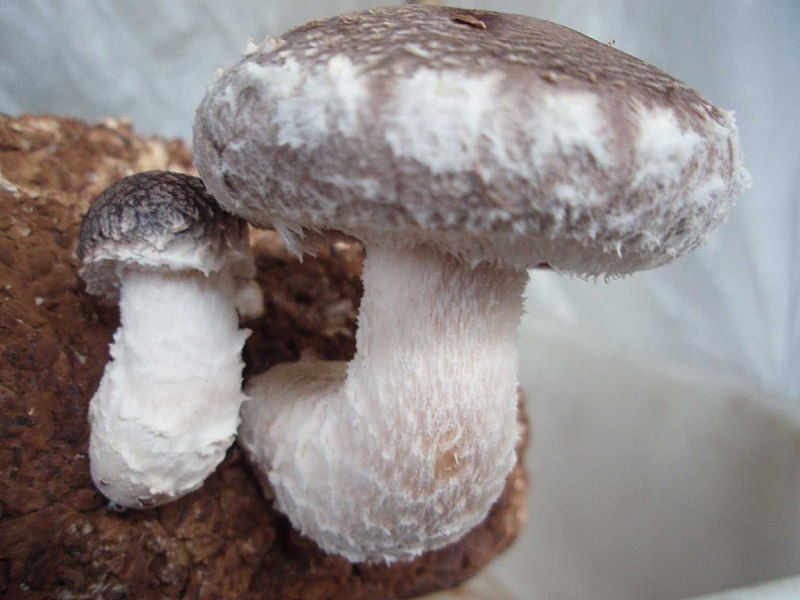
β-葡聚糖——燕麥的特別奉獻
有一種可溶性纖維,是由一系列葡萄糖分子聚合而成的非澱粉類多糖,這就是β-葡聚糖,它擁有多種獨特的保健功能:
。防感冒。β-葡聚糖可增強免疫戰士——巨噬細胞的活力,快速殺滅入侵的病毒、細菌、真菌等致病微生物,幫助你遠離感冒等感染性疾患。
。防癌。β-葡聚糖能殺滅肉瘤細胞、黑色素細胞等惡性細胞,對肝癌,乳腺癌的抑制率可與抗癌藥物比肩,且無任何毒副作用,故有一定的防癌抗癌之功。
。降低膽固醇。美國專家研究顯示,一個高血脂患者每天攝取3~4克β-葡聚糖,可降低“壞膽固醇”8%,其心臟病發作危險可降低10%~12%。
。調節血糖。β-葡聚糖的高粘性可抑制胃的排空,延緩小腸對葡萄糖的吸收,從而有效地延緩餐后血糖上升的速度,對糖尿病有一定的抑制和預防作用。
。保護腸道。β-葡聚糖不能吸收,在大腸中發酵,産生丙酸、丁酸等短鏈脂肪酸,抑制腐敗菌,促進益生菌,維持腸道菌群平衡,防止腹瀉或便秘。
。抗輻射。β-葡聚糖通過促進造血機能,增加白細胞、紅細胞的生成,減低輻射對人體的傷害。美國空軍放射生物學研究中心的實驗顯示,給小白鼠以致死劑量的輻射處理,結果發現,事先口服β-葡聚糖的受試鼠有80%完全不受輻射影響。
如何選購燕麥産品
哪些食物含有β-葡聚糖呢?魔芋、菇類、啤酒酵母、靈芝、青稞、苦蕎、大麥、豆類、玉米、燕麥等榜上有名。如果按含量排一個座次表,則頭把交椅的主人非燕麥莫屬。據測算,你只要吃上100克燕麥,至少可攝取到6~8克β-葡聚糖。所以,燕麥當仁不讓地成了人體獲取β-葡聚糖的最佳來源。
http://dailynews.sina.com/bg/news/heh/sinacn/20150120/15446400355.html
gluten, a protein, and glucan, a carbohydrate.
β-Glucans (beta-glucans) comprise a group of β-D-glucose polysaccharidesnaturally occurring in the cell walls of cereals, bacteria, and fungi, with significantly differing physicochemical properties dependent on source. Typically, β-glucans form a linear backbone with 1-3 β-glycosidic bonds but vary with respect to molecular mass, solubility, viscosity, branching structure, and gelation properties, causing diverse physiological effects in animals.
Various studies have examined the potential health effects of β-glucan. Oat fiber β-glucan at intake levels of at least 3 g per day can decrease the levels of saturated fats in the blood and may reduce the risk of heart disease. Some studies have suggested that cereal-derived β-glucan may also have immunomodulatory properties. Yeast- and medicinal mushroom-derived β-glucans have been investigated for their ability to modulate the immune system. β-glucans are further used in various nutraceutical and cosmetic products, as texturing agents, and assoluble fiber supplements, but can be problematic in the process of brewing.
Cereal and fungal products have been used for centuries for medicinal and cosmetic purposes; however, the specific role of β-glucan was not explored until the 20th century. β-glucans were first discovered in lichens, and shortly thereafter in barley. A particular interest in oat β-glucan arose after a cholesterol lowering effect from oat bran reported in 1981.[1]
In 1997, the FDA approved of a claim that intake of at least 3.0 g of β-glucan from oats per day decreased absorption of dietary cholesterol and reduced the risk of coronary heart disease. The approved health claim was later amended to include these sources of β-glucan: rolled oats (oatmeal), oat bran, whole oat flour, oatrim, whole grain barley and barley beta-fiber. An example of an allowed label claim: Soluble fiber from foods such as oatmeal, as part of a diet low in saturated fat and cholesterol, may reduce the risk of heart disease. A serving of oatmeal supplies 0.75 grams of the 3.0 g of β-glucan soluble fiber necessary per day to have this effect. The claim language is in the Federal Register 21 CFR 101.81 Health Claims: Soluble fiber from certain foods and risk of coronary heart disease (CHD).[2]
β-glucans form a natural component of the cell walls of bacteria, fungi, yeast, and cereals such as oat and barley. Each type of beta-glucan comprises a different molecular backbone, level of branching, and molecular weight which effects its solubility and physiological impact. One of the most common sources of β(1,3)D-glucan for supplement use is derived from the cell wall of baker’s yeast (Saccharomyces cerevisiae). The β(1,3)D-glucans from yeast are often insoluble. However, β(1,3)(1,4)-glucans are also extracted from the bran of some grains, such as oats and barley, and to a much lesser degree in rye and wheat. Other sources include some types of seaweed,[9] and various species of mushrooms, such asreishi, Ganoderma applanatum,[10] shiitake, Chaga and maitake.[11]
Cereal β-glucans from oat, barley, wheat, and rye induce a variety of physiological effects that positively impact health. Barley and oat β-glucans have been studied for their effects on blood glucose regulation in test subjects with hypercholesterolemia.[12]
Oats and barley differ in the ratio of trimer and tetramer 1-4 linkages. Barley has more 1-4 linkages with a degree of polymerization higher than 4. However, the majority of barley blocks remain trimers and tetramers. In oats, β-glucan is found mainly in the endosperm of the oat kernel, especially in the outer layers of that endosperm.[5]
| Cereal |
|
None |
Soluble
|

